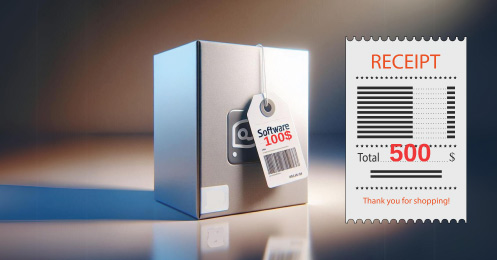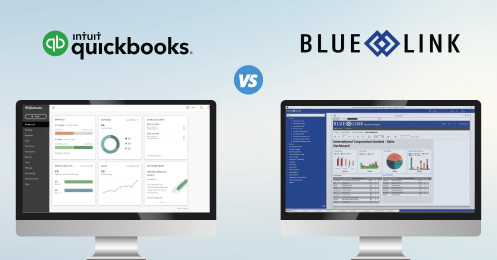The HVAC industry is experiencing an impressive surge, marking a promising future for both business owners and equipment distributors. The SBC reports that in 2022, the global HVAC market was valued at nearly USD 159 billion, and it is anticipated to escalate to USD 227 billion by 2028. This growth is mirrored in the United States, where the HVAC industry generates an astounding $150 billion in annual revenue, employing over 1.5 million people. With a projected growth rate of 6.1% from 2021 to 2026, the HVAC sector is not just expanding; it's thriving.
These statistics underscore a burgeoning demand for HVAC systems, positioning the industry as a pivotal component of modern infrastructure and a lucrative field for investment and development. As demand continues to climb, HVAC equipment distribution stands on the cusp of exciting opportunities, prepared to meet the mounting needs of a world increasingly reliant on advanced heating, ventilation, and air conditioning solutions.
Understanding HVAC Distributors
In the HVAC industry, distributors and contractors play distinct yet interconnected roles that are essential for effective service delivery. Distributors bridge the gap between manufacturers and contractors by ensuring a steady supply of equipment and components, often adding value through technical support, training, and services like marketing assistance. Contractors, on the other hand, work directly with end-users to install, maintain, and repair HVAC systems. They rely on distributors for timely access to parts and value-added resources to keep up with industry advancements.
The relationship between distributors and contractors evolves with technology and shifting priorities, such as younger contractors' focus on cost-effectiveness over long-term partnerships. While distributors manage supply chains and inventory, contractors focus on customer service and regulatory compliance in the field. This complementary dynamic enables contractors to deliver quality service while distributors support their growth and operational efficiency, contributing to the overall success of the HVAC industry.
The Landscape of HVAC Distribution
In the ever-evolving HVAC distribution industry, businesses are confronted with a unique set of challenges that demand industry-specific strategic management and innovative solutions.
Diverse Inventory
One of the most pressing issues is managing diverse inventories. HVAC distributors must handle a wide range of products and components, each with specific storage requirements and varying demand levels such as refrigerants, air filters, thermostats and more. This complexity necessitates precise inventory management to avoid overstocking or shortages, both of which can disrupt service and erode profitability.
Remote Sales Teams
Coordination of remote sales teams presents another significant challenge. As HVAC businesses extend their reach into new markets, effective communication and coordination become crucial. Remote sales teams require seamless access to real-time data and resources to ensure they can respond quickly to customer inquiries and closing sales efficiently. This demand for connectivity underscores the need for robust technology solutions such as remote selling tools that can support decentralized operations.
Customer Relations
Ensuring smooth admin operations is vital for delivering exceptional customer service. In the HVAC industry, many contractors rely on distributors for equipment servicing and support. Front-desk staff often serve as the initial point of contact for these contractors, and their ability to efficiently handle inquiries, schedule services, and resolve complaints significantly influences customer satisfaction and loyalty. Investing in training and development is essential to equip these teams with the skills needed to meet customer demands effectively. Additionally, providing them with the right tools to access extensive customer histories enhances their ability to assist clients promptly and accurately.
Seasonal Demand Shifts
As seasons shift, the demand for HVAC products and services fluctuates significantly, creating a dynamic landscape for wholesalers and distributors. During warmer months, the need for air conditioning units, parts, and related services spikes, while colder seasons bring increased demand for heating equipment and maintenance. This seasonality can make demand forecasting challenging, especially with additional variables like unpredictable weather patterns and changing consumer behavior.
To navigate this, HVAC distributors need reliable business management solutions that enable precise demand planning and inventory control to analyze historical sales data and identify seasonal trends, allowing them to prepare for high-demand periods without overstocking or risking shortages. For instance, access to detailed past sales data can reveal peaks in demand for certain parts, equipment, or services, helping distributors optimize ordering and staffing decisions.
Strategic Planning
To navigate these challenges, HVAC distributors must adopt strategic approaches that leverage the strengths of their management teams and workforce. Business managers and their teams are tasked with ensuring seamless operations, effective communication, and a robust response to market demands. Achieving operational efficiency and maintaining competitiveness in such a dynamic industry relies heavily on the implementation of business software solutions. These tools are designed to address the unique challenges of HVAC distribution, such as inventory management and remote team coordination. By embracing technology and fostering a culture of adaptability, distributors can not only meet today's demands but also position themselves for sustainable growth in the future.
ERP to Grow an HVAC Distribution Business
In today's competitive market, HVAC distributors must leverage every opportunity to grow their businesses and enhance customer relationships. Implementing a robust business software solution enables distributors to capitalize on growth potential by streamlining operations, optimizing processes, and building long-lasting relationships with their B2B customers. By integrating all aspects of the business into a single platform, HVAC distributors can ensure seamless operations and superior customer service.
At the heart of this transformation is Enterprise Resource Planning (ERP) software. ERP systems are critical for HVAC distributors looking to improve efficiency and maintain a competitive edge. They offer comprehensive functionality that covers everything from inventory management and order processing to customer relationship management and reporting. By consolidating these functions into one platform, ERP software eliminates the need for multiple standalone solutions, reducing data entry errors and increasing operational efficiency.
The following table presents key ERP functionalities that are particularly beneficial for HVAC distributors, helping them manage operations effectively and enhance customer satisfaction:
| Feature | Description |
| Inventory Management | Manage multiple warehouses, serialized inventory, and benefit from automated reorder management, ensuring optimal stock levels and availability. |
| Service & Repair | Take advantage of job/project costing, quoting, and appointment scheduling and reminders to ensure you customers are happy with the purchase of the equipment and the maintenance of it. |
| Sales Rep Tools | Tracks sales prospects and manages customer data with contact management, enhancing customer interactions, vital for maintaining strong customer relationships. |
| Barcode Scanning | Facilitate quick and accurate inventory tracking, reducing errors and improving warehouse efficiency, which is crucial for timely order fulfillment. |
| B2B Online Order Portal | Allows online ordering, product availability checks, and order status tracking – useful for customers and remote sales reps, enhancing customer convenience and satisfaction. |
| Warehouse Management | Provides warehouse management capabilities such as wireless handheld picking and empty bin and shelf availability for smaller distributors who do not need a full-blown WMS system – for boosting operational efficiency. |
| Reporting & Analytics | Offers real-time insights into business operations, allowing informed decision-making and process optimization. |
And this is just the beginning. By leveraging these ERP features amongst others, HVAC distributors can not only streamline their operations but also enhance their customer service capabilities, positioning themselves for sustained growth and success in the B2B marketplace.
Blue Link ERP: More Than a Vendor, a Business Partner
Choosing and implementing a business solution such as an ERP system is a strategic decision that impacts a company for years to come. The capabilities and features of a robust software solution are crucial in determining the long-term efficiency and agility of your business. However, it's not just about the functionality; investing in an ERP solution means forging a long-term relationship with the software vendor. This relationship encompasses various aspects, from implementation to ongoing support.
At Blue Link ERP, we take pride in our reputation for building enduring partnerships with our customers, many of which have been using Blue Link ERP for over 20 years. Our approach involves transparent sales, seamless implementation, and personalized support, ensuring that our clients receive the best service possible. We handle all processes in-house, allowing us to provide focused attention and we take the time to understand the unique business challenges and characteristics of every client.
Contact us at any time for a quick no-obligation chat or find out for yourself if we are a good fit for your business with our online Blue Link ERP quiz!










